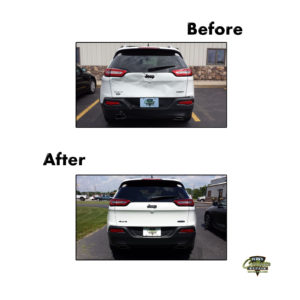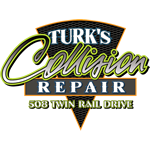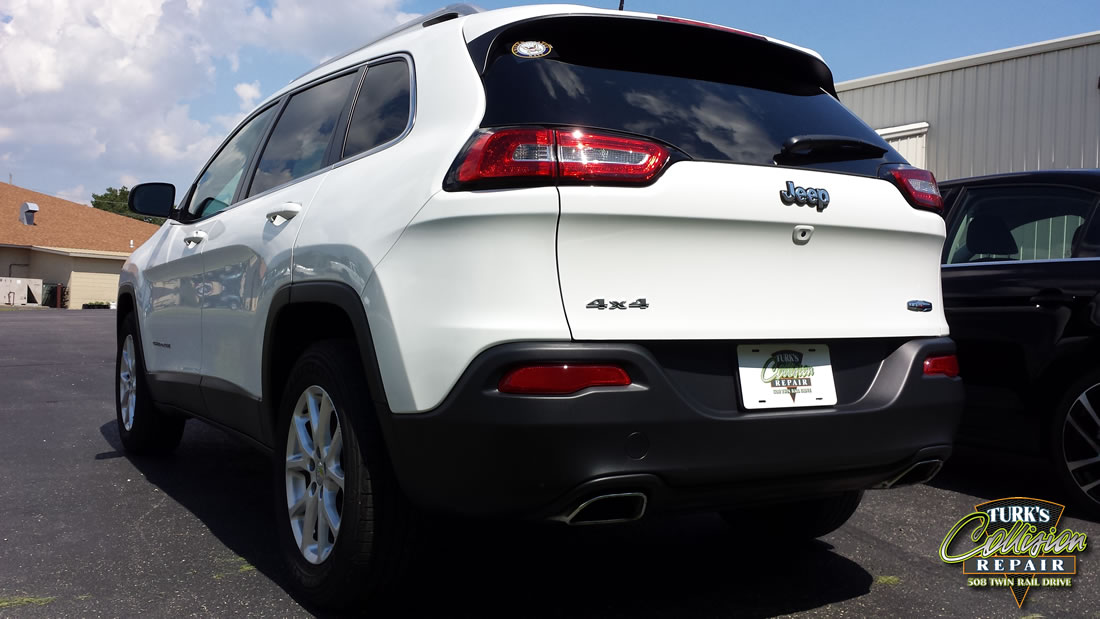 Turk’s recently completed a Jeep Cherokee collision repair, which was necessary due to a rear end accident. Rear end accidents are very common and often the result of distracted driving, following too closely or driving too fast for conditions. According to the National Highway Traffic Safety Administration (NHTSA), an estimated 40 percent of all car accidents are rear-end collisions.
Turk’s recently completed a Jeep Cherokee collision repair, which was necessary due to a rear end accident. Rear end accidents are very common and often the result of distracted driving, following too closely or driving too fast for conditions. According to the National Highway Traffic Safety Administration (NHTSA), an estimated 40 percent of all car accidents are rear-end collisions.
This Jeep Cherokee Collision Repair provided a before and after opportunity to demonstrate the quality auto body repairs Turk’s is known for.
Turk’s Collision Repair in Minooka performs Jeep auto body repairs on a wide variety of popular models, including the current Jeep model line-up of Jeep Renegade, Jeep Wrangler Jeep Grand Cherokee, Jeep Compass and Jeep Cherokee.
With the Jeep brand name continually gaining momentum and more and more Jeeps on the road, Turk’s Collision repairs a fair number of Jeeps. According to a 2014 Motley Fool Article regarding the Jeep’s resurgence, Jeep Is Absolutely Crushing the Auto Industry. Three Jeep models drive the vast majority of Jeep’s sales: the Grand Cherokee, Wrangler, and Cherokee, accounting for nearly 80% of Jeep brand sales in the U.S. market.
For more information about current models visit the Official Jeep Cherokee web page.
If you need Jeep Collision Repairs, contact Turk’s Collision Repair in Minooka.
*Please drive carefully. Although accidents will occur, and Turk’s Collision Repair is here when you need us, there are precautions that can be taken to prevent rear end collisions. Its important to be aware of Driver Distractions, including: Using a cell phone, eating, in-car technologies like GPS navigation and entertainment, and disruptive passengers. Any of these can take a driver’s attention away from the road. Tailgating and following another car too closely is risky. If the vehicle in front needs to stop suddenly, the vehicle behind may not have time to stop. Its not just the vehicle itself that needs distance to stop, but the driver needs time to react. There are multiple mechanical and biological systems at work during a stop and various external variables. Its always safer to err on the side of caution and maintain a distance that is adequate to stop within. Hazardous weather conditions also come into play – Rain, snow, icy roadways, and standing water can prevent a driver from successfully stopping a vehicle. Uniquely hazardous during the summer months are oiled roads and roads that have loose aggregate, or other materials that condition the asphalt. Consistent factors to be aware of are the vehicle’s speed and avoiding impairments like driving tired, driving after taking certain medications, or under the influence.

